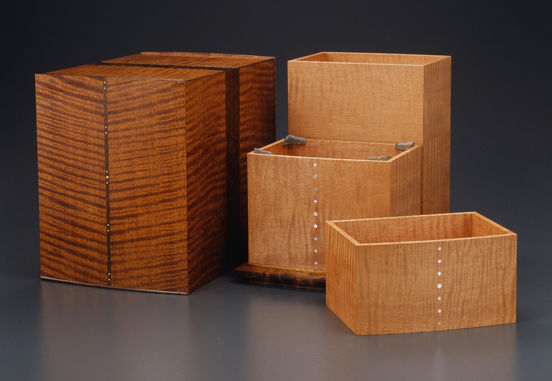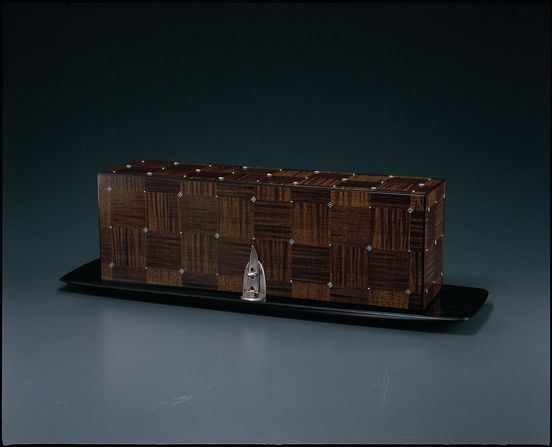Sashimono is the Japanese word for the traditional woodworking techniques employed to create boxes and furniture and it also refers to the objects that are created. It can be translated into English as 'cabinetmaking' although in Japan these techniques are rarely used for anything bigger than a tea cabinet. Traditional Japanese homes did not contain much furniture and although today Western furniture - such as tables and chairs - have become quite common, people sat on the floor and had no call for chairs. They did not require cabinets to display their treasures as there was a special alcove built into the best rooms for that purpose. As a result, craftsmen tended to focus on creating the items that were used to decorate this alcove.
The main decoration was a hanging scroll, containing a painting or calligraphy that could be rolled up and put away when not in use. This scroll was accompanied by a flower arrangement or a craft work, and so to Japanese people, both craft works and paintings are considered equal, neither being superior to the other. Against this background, the crafts were developed to a very high degree in Japan. Contemporary craft works are able to combine art, based on the individual's creativity, with tradition, that is based on the relationship with others, without any inconsistency. For this reason, I believe that rather than the word ‘craft', we should use the Japanese term, kogei when referring to this kind of creative activity. In Japan today, the concept of kogei covers a wide range and all kinds of work are being produced, but personally, I try to preserve traditional aesthetics and concepts.
In the kogei field Japanese have had a particular interest in boxes since ancient times. The space within the box is a source of mystery, a box is capable of shutting off a section of space, and so to open the lid is to gaze into the world. I find myself fascinated by this concept of the box and produce many myself. While I give due consideration to the function of boxes as containers, that is not my only consideration when making them; I also focus on decoration, appearance and texture- kogei works need to be fondled to be fully appreciated. Although there are only a few on display, I hope that these works of mine will allow you to experience this kind of world.
I was selected by the Japanese Cultural Agency to come to New Zealand in the role of cultural ambassador. I would like to thank Mrs. ITOH Kazuko of Green Gallery who helped make it possible for me to show my work at Objectspace and Mr. YOKOKAWA Sei and Mrs. ISHII Motoko for having lent so many works shown here.
SUDA Kenji - Fine Wood Artist

Kenji Suda, Renri (Merging Trees).

Kenji Suda, Hyakka (Hundred Flowers).